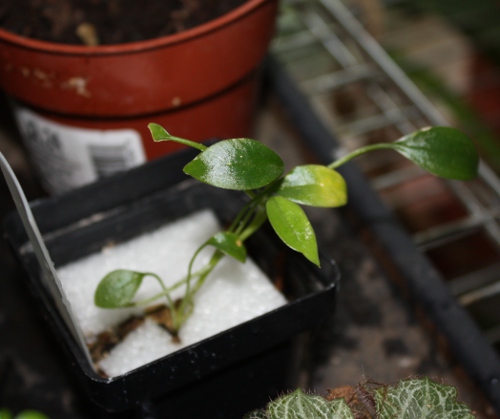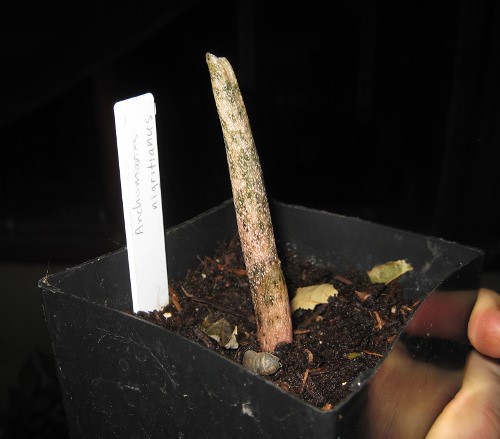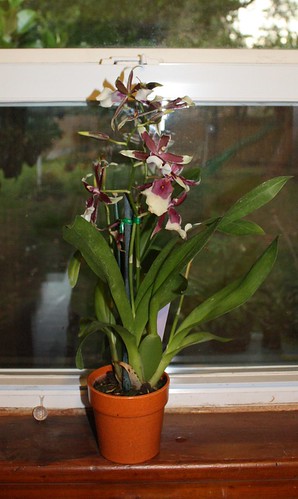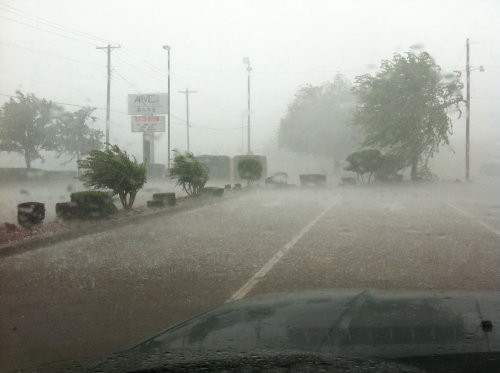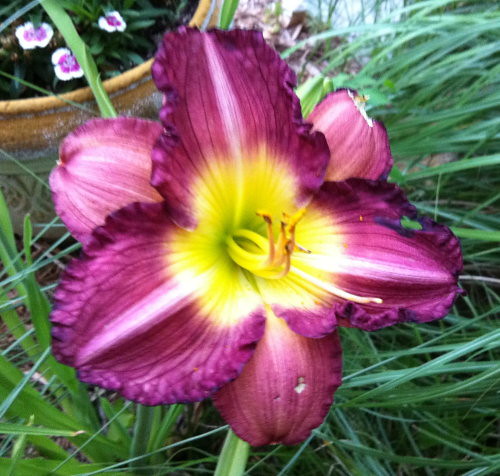For our six year anniversary, Christie and I went to Eureka Springs for the weekend. It was a relaxing weekend getaway. Here are some snapshots of different plants we saw on our trip - ones I don't see often (or ever).
 |
| Large flowerbed of red Monarda |
One plant that I have never seen before in person (that I can recall), but have seen in the plant catalogs is
Monarda. There were a lot of these in Eureka Springs. They are really attractive when in bloom, but are tall and gangly. They could be mistaken for a weed, if not obviously planted in a well-maintained flowerbed.
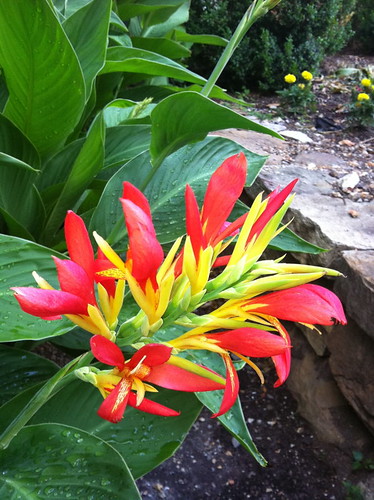 |
| Canna at the Crescent Hotel |
The canna above was growing in the gardens of the hilltop Crescent Hotel in Eureka Springs. We toured the notoriously quirky
Quigley's Castle, known as "the Ozark's strangest dwelling." I debated writing a whole post about this place, but decided to just include it in this post with other plants from the area. This house has flowerbeds
inside the house around the entire perimeter, with plants growing up against the windows two storeys high -
Bougainvillea,
Hibiscus,
Epiphyllum,
Asparagus fern and others. The most impressive plants (by virtue of their health and attractiveness) were the African violets and relatives. The Flame Violets (
Episcia) were particularly striking.
 |
| Various blue, purple and pink African violets (Saintpaulia) and red Flame violets (Episcia) in bloom. |
The house - excuse me, "castle" - is surrounded by really nice gardens with some neat plants. One of them looked a lot like Solomon's Seal (
Polygonatum) to me, but was obviously something different. It had some seed heads developing on it, so I had missed the flowers, unfortunately. I posted photos of this plant on a forum and also sent pictures to a friend who lives in NW Arkansas. They told me this plant is
Uvularia grandiflora.
 |
| Uvularia grandiflora (Bellwort) |
I looked at some photos online and it is really neat when in bloom. I liked it even out of bloom for the interesting way the leaves attach to the stem. They are called "perfoliate" leaves, which means that the leaf (or
foliage) is seemingly pierced (or
perforated) by the stem - perfoliate. Perfoliate leaves are a subcategory of "sessile" leaves. Sessile means that the leaf is attached directly to the main stem without a stalk or peduncle leading to the leaf base.
 |
| Uvularia grandiflora (Bellwort). Check out the unusual (perfoliate) way the leaves attach to the stem. |
On our way home we passed through Bentonville (headquarters of Wal-Mart), following our outdated GPS directory to a once-existent location of the famous
AQ Chicken House. After finding this location was no longer opened, we headed to Springdale, the original location. Thanks to this detour, we happened upon a nice nursery, which Christie let me enjoy, giving our bellies a little more time to get hungry for lunch since it was still early. The blue-gray leaved plant below is now on my landscape plant wish list. Isn't it awesome? I just need to find a place to plant it. Then I need to find one for sale closer than Arkansas!
 |
| Fothergilla major Blue Shadow |
At our most recent MidAmerica chapter meeting of the IAS several members were discussing hardy plants (to Oklahoma, Arkansas and Texas) that have that tropical look, with large, glossy leaves. There was a plant growing at this nursery (below) that, upon first glance, I thought was a
Philodendron. Pretty quickly I realized it was not a
Philodendron, and not even a tropical. It is
Acanathus mollis 'Oak Leaf', commonly called Bear's Breeches (what a weird name for a plant...).
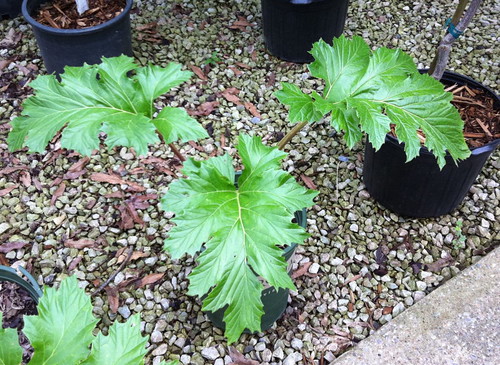 |
| Acanthus mollis 'Oak Leaf' aka Bear's Breeches |
The nursery had these large Begonias going for $30 each. That's more than I want to spend for a Begonia, but they were very mature and an attractive variety - in nice pots, no less.
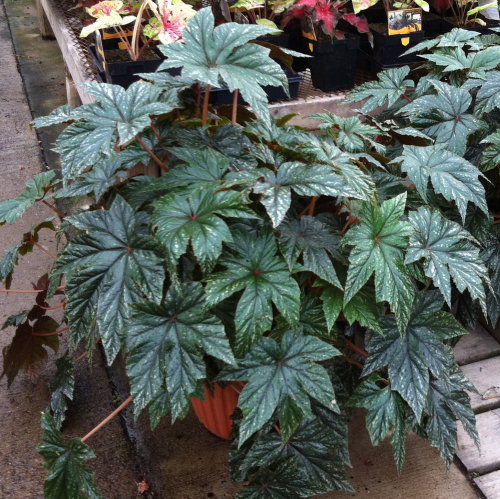 |
| Begonia |
And yes, I did buy a couple of small plants at the nursery - a yellow shrimp (
Pachystachys lutea) and a red shrimp (
Justicia brandegeana). I've had both of these in the past, but lost mine.

